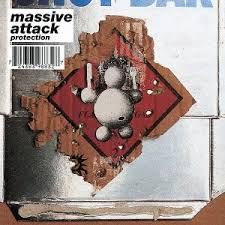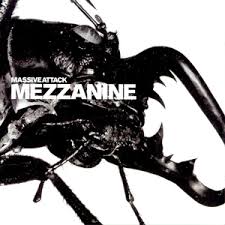The best of Massive Attack

The best of Massive Attack
Few groups have shaped modern music quite like Massive Attack. Emerging from Bristol in the early 1990s, they pioneered a genre-blending sound that came to define trip hop, influencing artists across electronic, hip hop, and alternative scenes. Across five studio albums, Massive Attack evolved constantly—never content to repeat themselves, always pushing boundaries. This blog explores each of their studio releases, tracing the sonic and emotional journey of a band that redefined atmosphere, collaboration, and innovation in popular music.
1. Blue Lines (1991)

Massive Attack launched their groundbreaking debut Blue Lines in 1991, reshaping the musical landscape with a bold new sound. Blending hip hop, soul, dub, and electronic textures, the album laid the foundation for what critics would later call trip hop. Although the group drew inspiration from various genres, they crafted something entirely distinct and unmistakably British.
Tracks like “Unfinished Sympathy” and “Safe from Harm” showcased their talent for combining emotional depth with sonic innovation. Shara Nelson’s vocals brought warmth and vulnerability, while the beats retained a gritty urban edge. From start to finish, Blue Lines sounds purposeful and tightly constructed. It never rushes, yet never drags.
Throughout the record, Massive Attack kept the focus on atmosphere and groove rather than traditional song structure. Each track adds a new layer to the listening experience, offering fresh details with every replay. Notably, they avoided overproduction and allowed space for each element to breathe. That restraint became a signature aspect of their style.
Despite its chilled-out surface, the album carries a strong undercurrent of tension and urgency. Massive Attack didn’t aim for pop appeal; instead, they followed their creative instincts. As a result, Blue Lines feels timeless rather than tied to its era. Over three decades later, it still influences producers and musicians around the globe.
Moreover, the group’s collaborative approach created a sense of musical democracy rarely found in mainstream acts. Each member’s contribution matters, yet no one overshadows the others. Because of this balance, Blue Lines remains both cohesive and richly textured.
Blue Lines didn’t just mark the arrival of Massive Attack—it sparked a movement. Few debuts carry this level of innovation and emotional weight, and fewer still endure with such impact.
2. Protection (1994)

Massive Attack returned in 1994 with Protection, a smoother and more refined evolution of their genre-defining debut. While Blue Lines introduced their style, Protection deepened it, emphasizing atmosphere and emotional complexity. This time, the group leaned further into chilled-out rhythms and moody textures without losing their urban edge.
Opening with the title track, sung by Tracey Thorn, the album sets a reflective tone from the outset. Her voice floats over downtempo beats, creating a feeling of quiet strength. Soon after, Massive Attack shifts gears with tracks like “Karmacoma,” which brings darker grooves and hypnotic spoken vocals. No two tracks sound the same, yet the mood stays unified.
The band didn’t repeat themselves. Instead, they built on past ideas while introducing new collaborators and styles. Craig Armstrong’s cinematic arrangements brought fresh elegance, and Tricky’s presence added tension and unpredictability. Together, these elements created a sonic palette that felt richer and more ambitious than before.
Although the beats remain central, Massive Attack used more space and subtlety on Protection. Rather than overwhelming listeners, they invited them to sink into the atmosphere. Even the instrumental tracks contribute to the album’s narrative, adding texture rather than acting as filler.
Still, Protection doesn’t aim for easy listening. Beneath the surface lies emotional complexity and lyrical ambiguity. These qualities make the album more rewarding with each revisit. Moreover, its balance of beauty and grit reflects the duality at the heart of Massive Attack’s music.
As with their debut, Massive Attack didn’t follow trends—they created them. Protection solidified their reputation as fearless innovators, unafraid to evolve. While quieter than its predecessor, the album speaks volumes through nuance and restraint.
Protection confirmed that Massive Attack was no passing experiment but a visionary force shaping modern music.
3. Mezzanine (1998)

With Mezzanine, Massive Attack took a bold and unexpected turn, embracing darkness, distortion, and deeper emotional intensity. Released in 1998, the album departed from the smooth, jazzy textures of their earlier work. Instead, the group explored shadowy soundscapes filled with paranoia, tension, and industrial grit.
Right away, “Angel” sets the tone with slow-burning menace and thunderous bass. The track unfolds gradually, building suspense before erupting with raw power. From there, Massive Attack steers listeners through a labyrinth of dense beats, haunting melodies, and stark lyrics. Tracks like “Teardrop” and “Inertia Creeps” showcase their new sonic identity—both fragile and fearsome.
Rather than rely on familiar formulas, they reinvented themselves. Massive Attack introduced heavier guitars, deeper bass lines, and more aggressive rhythms. This shift brought a darker, edgier energy to their sound while retaining their signature layered production. The result feels more confrontational, yet just as hypnotic.
Vocal contributions elevate the album’s emotional depth. Elizabeth Fraser’s performance on “Teardrop” conveys vulnerability and mystery, anchoring one of the group’s most iconic songs. Meanwhile, 3D and Daddy G deliver verses with brooding intensity, adding to the album’s anxious undercurrent.
Throughout Mezzanine, tension never quite resolves. That unease keeps listeners engaged, drawing them into the record’s murky world. Even during quieter moments, an ominous edge lingers beneath the surface. This unpredictability makes the album feel alive, constantly shifting and evolving.
Importantly, Mezzanine didn’t just expand Massive Attack’s reach—it redefined what electronic music could express. Critics praised its ambition, and fans embraced its bold departure from expectation. Despite its risks, the album became their most commercially successful release.
Mezzanine stands as Massive Attack’s darkest, most daring work. It remains a masterpiece of mood, proving that innovation thrives in discomfort.
4. 100th Window (2003)

100th Window arrived in 2003, marking another shift in Massive Attack’s evolving sound. This time, the group stripped back their trademark sampling and focused on digital precision. The result felt colder, more introspective, and deeply immersive.
Unlike previous albums, 100th Window saw Robert Del Naja (3D) take near-complete creative control. Andrew Vowles had already departed, and Daddy G took a temporary break from the project. As a result, this album presented the most singular vision Massive Attack had ever released.
Despite the personnel changes, the music remained layered and emotionally complex. The beats felt slower, but heavier. The production relied less on organic textures and more on glitchy, ambient electronic sounds. That shift created a sense of emotional distance, yet every track still pulsed with tension.
Sinéad O’Connor’s haunting vocals featured prominently, adding vulnerability and grace. Tracks like “Special Cases” and “What Your Soul Sings” stood out as melodic highlights, providing contrast to the album’s otherwise shadowy tone. These songs gave 100th Window moments of light within its dense atmosphere.
Still, the album refused to offer easy hooks or commercial compromise. Massive Attack deliberately moved away from accessibility, pushing listeners into darker territory. Every track unfolds slowly, building a mood rather than chasing immediate payoff. That patience rewards repeated listens.
While 100th Window divided fans upon release, it displayed the group’s continued commitment to experimentation. Even without previous collaborators, Massive Attack maintained their identity—moody, confrontational, and fearless. Over time, appreciation for the album has grown.
100th Window proved that Massive Attack wouldn’t stay in one creative lane. They embraced evolution, no matter how isolating it seemed. Though quieter than Mezzanine, the album speaks volumes through its minimalism and emotional restraint.
5. Heligoland (2010)

Massive Attack returned in 2010 with Heligoland, their first studio album in seven years. The record marked both a reunion and a reinvention, blending past elements with new directions. Unlike the solitary feel of 100th Window, this album embraced collaboration and contrast.
Daddy G rejoined the creative process, rebalancing the duo’s dynamic. Together, they recruited a diverse group of guest vocalists, each bringing distinct energy. Horace Andy returned as a familiar voice, while newcomers like Guy Garvey and Tunde Adebimpe expanded the sonic range. Each track carried its own identity, yet the overall mood remained cohesive.
Massive Attack leaned into mood and rhythm, but with more organic textures than before. Guitars, live drums, and rawer mixes replaced the clinical digital sheen of the previous album. Because of this shift, Heligoland felt warmer and more human, even while exploring themes of paranoia and political unease.
Tracks like “Paradise Circus” and “Splitting the Atom” showcased the group’s mastery of tension and release. Rather than chase radio appeal, they built intricate soundscapes with hypnotic grooves and layered arrangements. Still, melodies surfaced in unexpected moments, adding depth and dimension.
Importantly, Heligoland didn’t attempt to recapture past glories. Massive Attack moved forward, aware of their legacy but unwilling to coast on it. Every song felt intentional, shaped by years of reflection and experimentation.
While not as immediately groundbreaking as Mezzanine, the album earned respect for its subtlety and maturity. It demonstrated that Massive Attack still had fresh things to say—and new ways to say them. Critics and fans appreciated the evolution, even if the tone felt less confrontational.
Heligoland reinforced Massive Attack’s role as musical innovators. They remained restless, reflective, and committed to pushing their art into unexplored territory.
Across three decades and five studio albums, Massive Attack have remained uncompromising and unpredictable. Each release reflects a different chapter in their artistic evolution—never static, always searching. Whether layering soulful melodies or plunging into shadowy electronics, Massive Attack consistently challenge the listener and redefine what music can evoke. Their legacy isn't just about genre; it's about mood, experimentation, and emotional honesty. Few bands continue to shape the musical landscape with such quiet authority.
Recent Posts
Queen studio albums: A Review
Phil Collins Albums Ranked & Reviewed – Complete Guide to Every Studio Album
The best of Massive Attack
Let’s Make Magic
Book Your Event DJ Now




